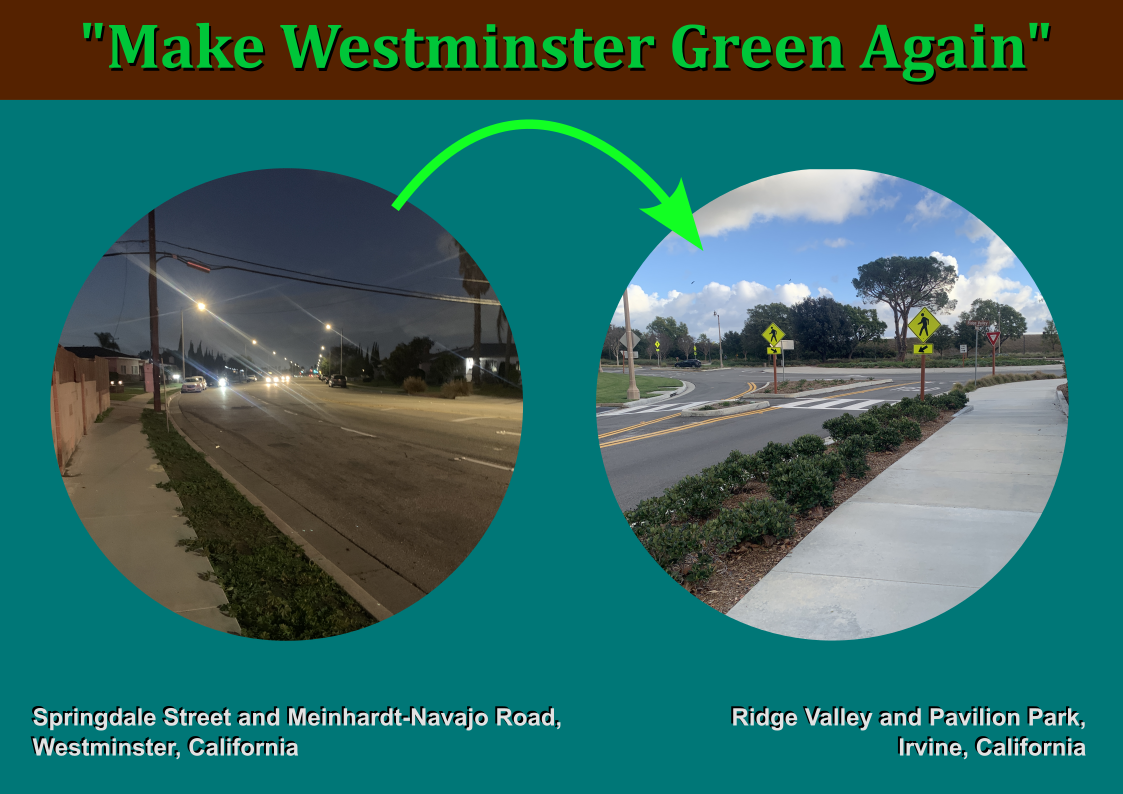In Westminster, each winter gets cooler, each summer gets warmer. In Phoenix, Arizona, more than 400 people died due to heatstroke in 2023. These deaths were concentrated in areas of Phoenix with minimal amounts of trees and greenery and lots of asphalt and concrete. This is similar to the infrastructure in Westminster, California and surrounding inland municipalities. The city has the lowest park density, with less than one acre of parkland per thousand residents. To combat the worsening heat island effects, the concrete and asphalt infrastructure must be converted to greenery with trees and parks. Although the proposed solution to this problem is very generic, it has been proven to lower surface and air temperatures through a process called evapotranspiration. Trees also provide shade, and greenery does not reflect heat up into the atmosphere. The proposal’s main goal is to convert Westminster into an urban forest. Neighbourhood residents are encouraged to plant trees in their front and back yards. Taxes can fund the redevelopment of Westminster’s roads and build more parks in Westminster. The first orchards and community gardens can be constructed on abandoned properties. The long-term savings of these changes will outweigh the upfront costs.
Contact us
Thank you for your interest in contacting Future Engineers. We look forward to connecting with you!
General Inquiries
support@futureengineers.orgSponsorship Inquiries
sponsor@futureengineers.org
